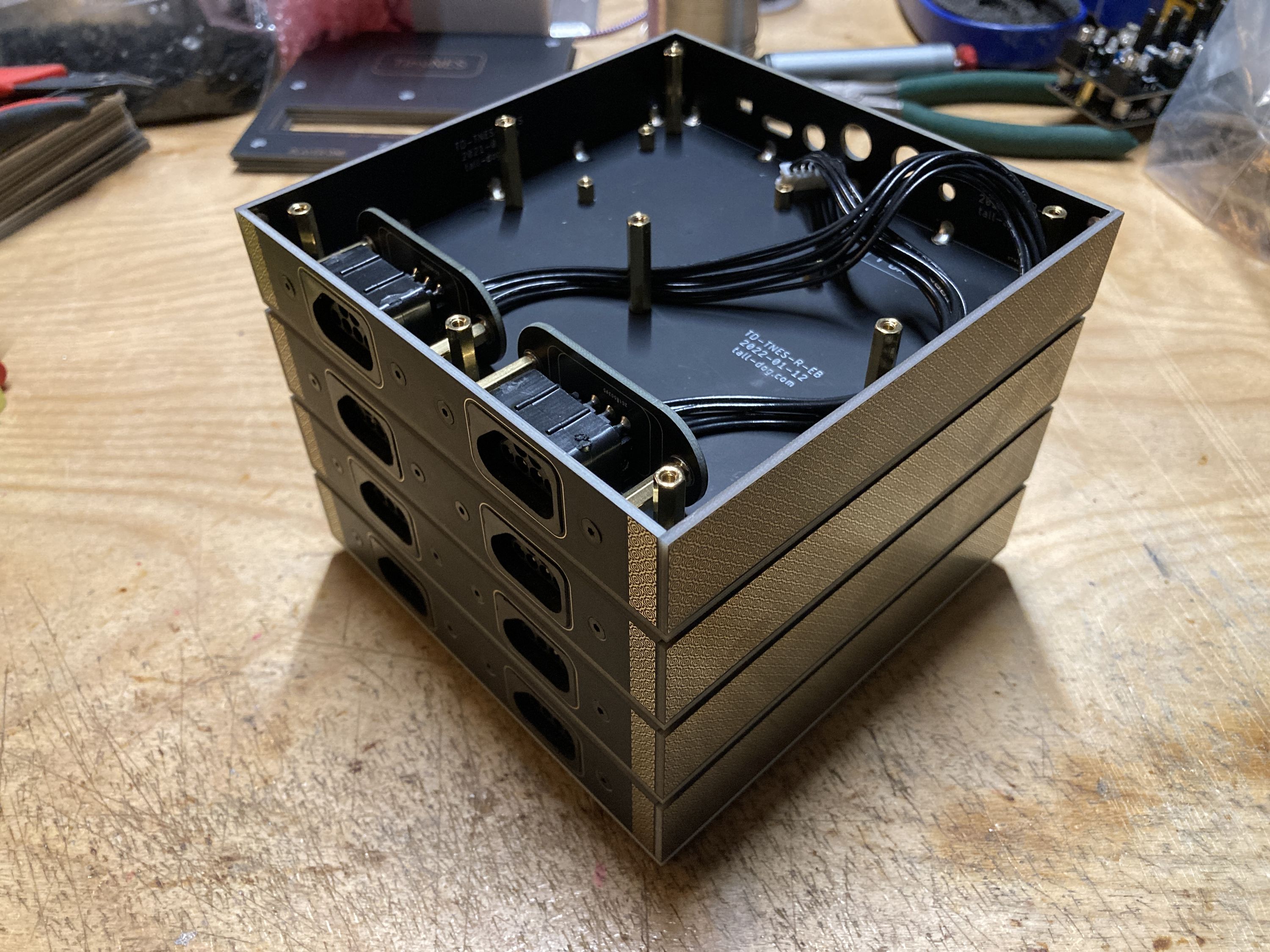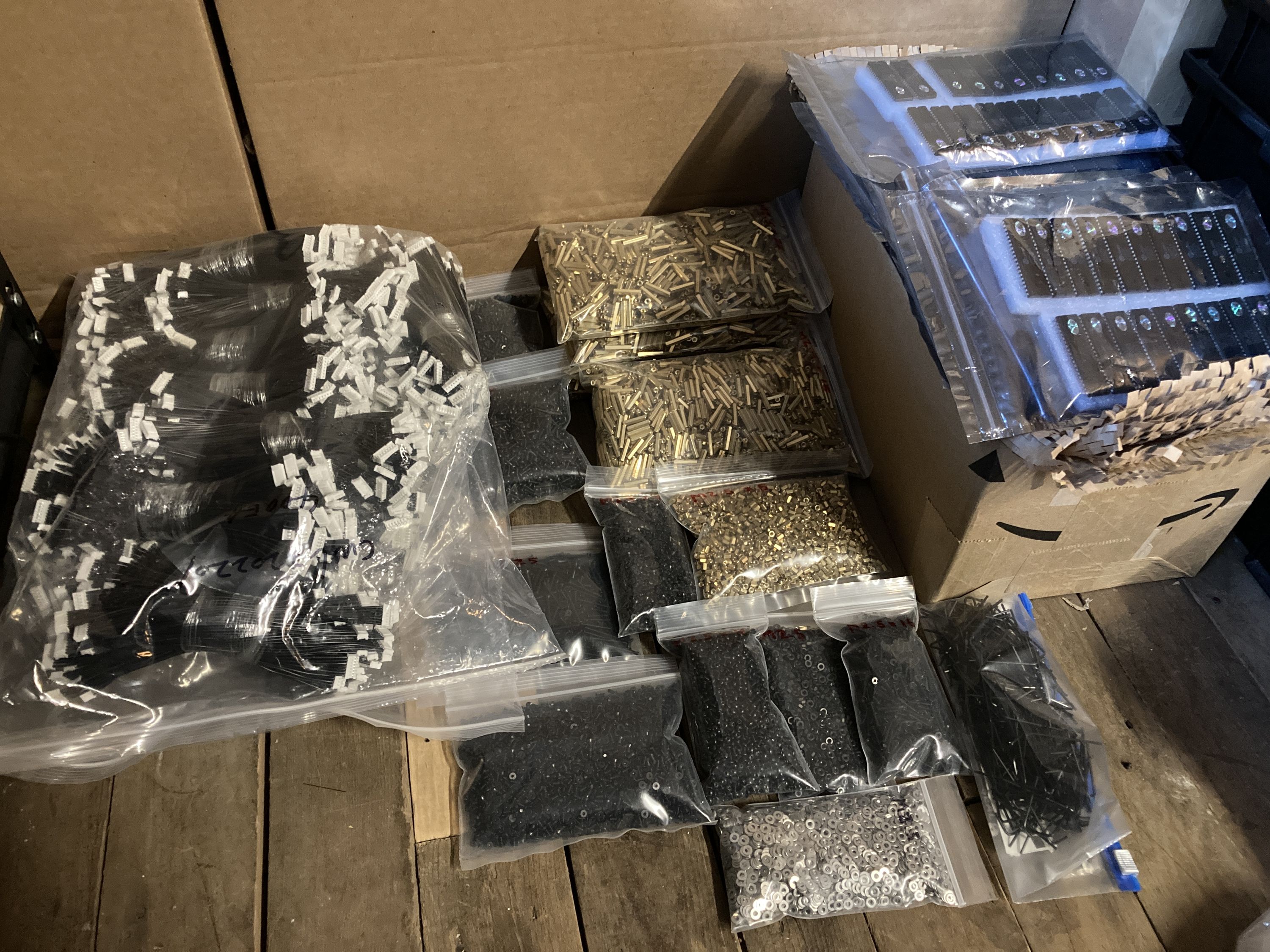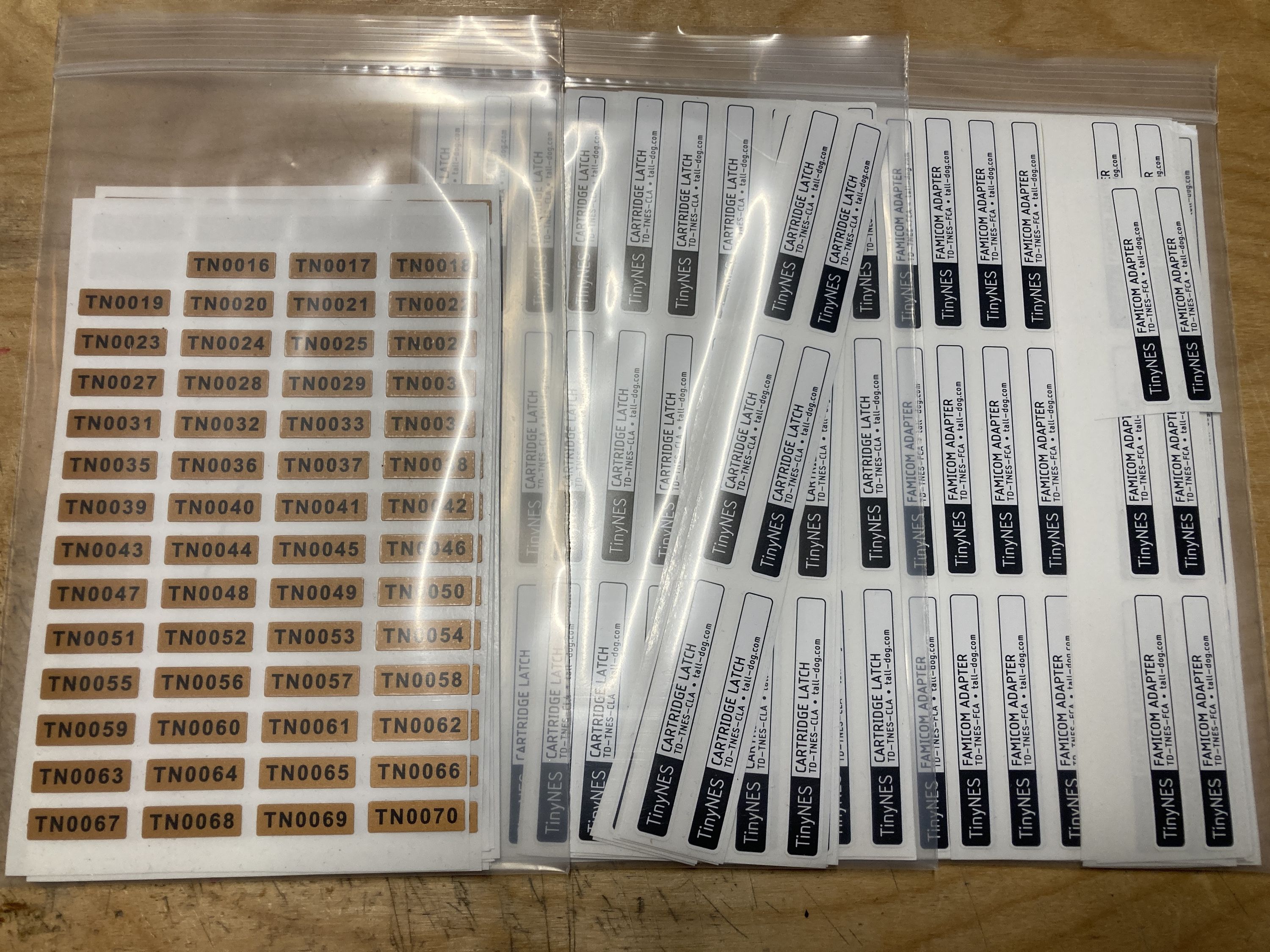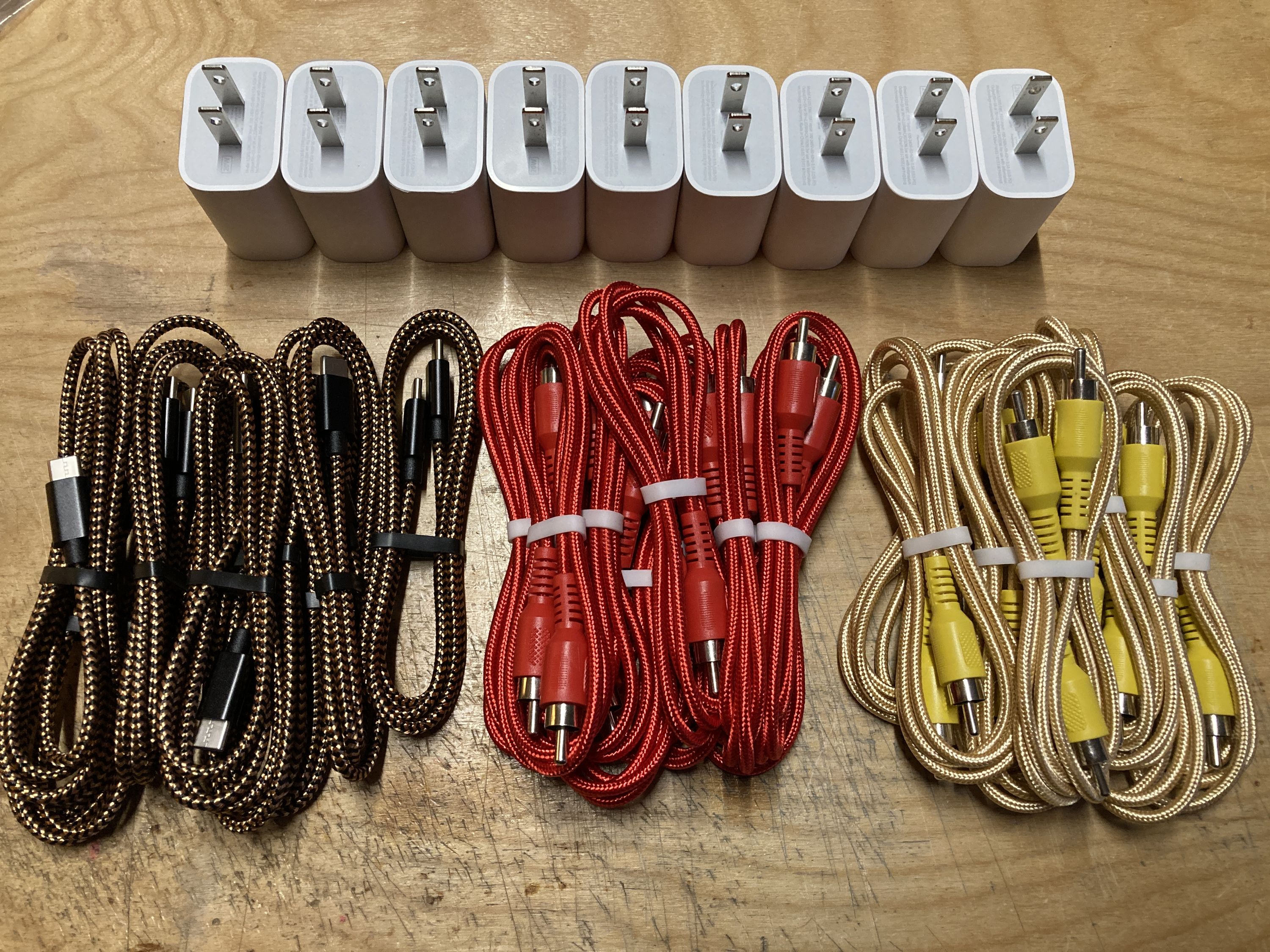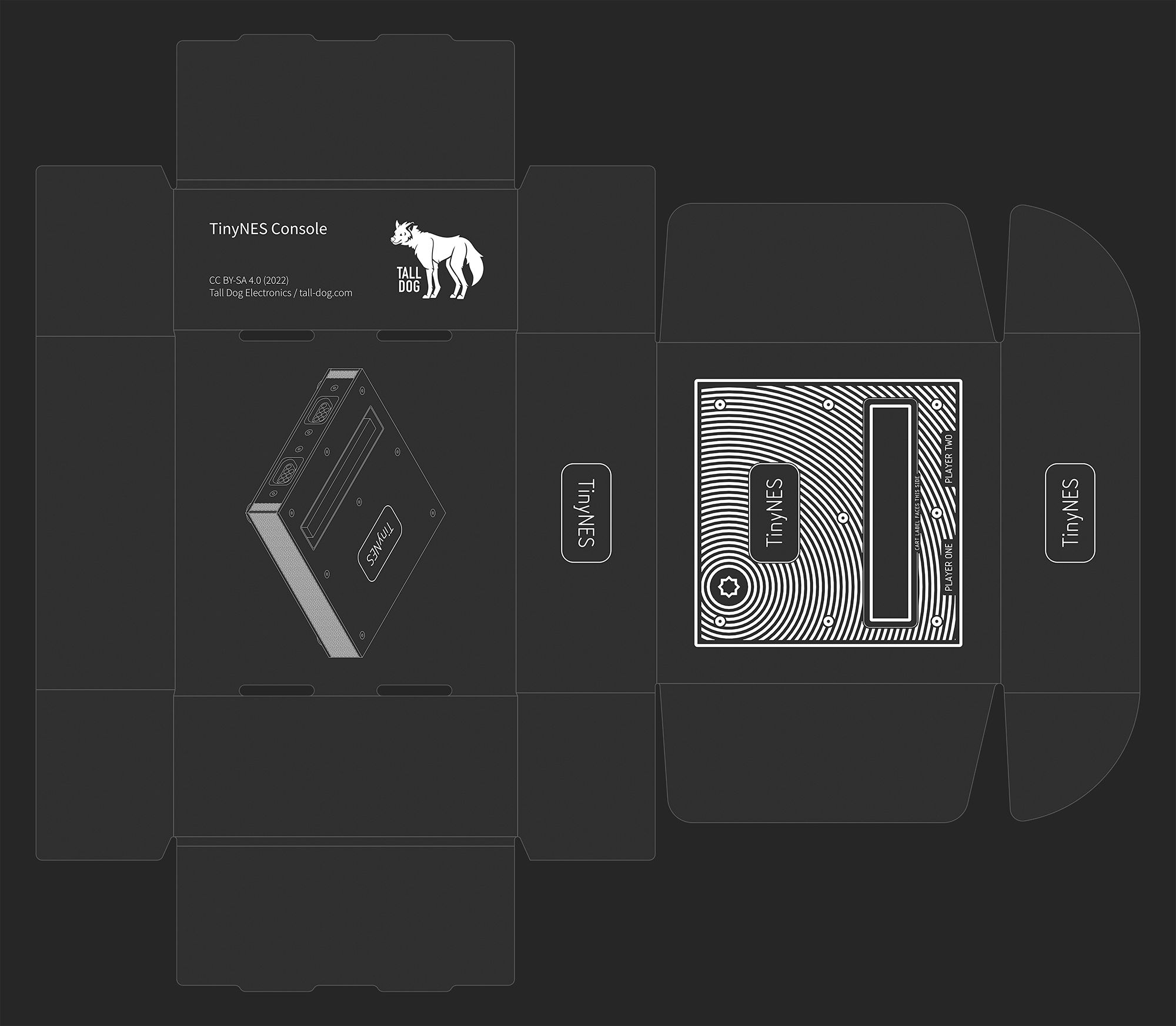Mar 22, 2022
Project update 5 of 11
Manufacturing Progress!
by Daniel GHere’s our first post-campaign update. I hope everyone likes bullet points!
- We raised over $67k, far beyond our $20k goal. Incredible! Thank you, everyone!
- We’ve received the funds from the campaign! This means that various manufacturing, assembly, and purchasing processes can finally get rolling.
- All final assembly and packaging is going to be done locally (to us) in Easthampton, Massachusetts. Board assembly (soldering) will be done by our factory contractors, with help from their fancy robots.
- Mouser is doing all of the fulfillment and shipping to our backers, as they do for all Crowd Supply campaigns. Our part numbers are now in their systems, and we have open purchase orders from them for all of our pre-ordered items.
- All bonus cartridges have now been cleaned, tested, assembled, labeled, packaged, and shipped off to Mouser. About 20% of these have their original plastic enclosures and labels, while the remainder have new transparent shells, most of which are a pretty shade of blue, though some are clear.
- All hardware (screws and standoffs and such) has been purchased and received. Over 32,000 pieces in total! Each TinyNES contains over 70 pieces of hardware, all of which is M2.5 thread with 1.5 mm hex drive. An allen wrench for this is included!
- Internal wiring (two 7-pin JST PH cables per console) has been manufactured and is now inbound to us.
- USB-C power jacks have been implemented and tested, and are working great. Pretty much any USB-C power supply should work, as PD (power delivery) protocol is not required. The rear panel design has been modified to accommodate.
- Consoles will each ship with a cute little white USB-C power adapter.
- Samples of external cables (RCA and USB-C) have been received and tested. They’re really nice braided nylon and they look and feel great! The full order is being manufactured now. There will be a red RCA cable, a yellow RCA cable, and a black and gold USB-C cable, each of which are about one meter long.
- The supplemental audio TRRS jack has been implemented and tested, as well as the breakout cables that will be included. The full order of breakouts is inbound now; they have female RCA connectors, because that's what's available, so you may want to pick up a few male RCA to female 3.5 mm adapters (or equivalent cables) in anticipation.
- The audio output circuit has been changed a bit, in order to reduce noise. Mixed audio output is now driven by one channel of an Onsemi NCS603, the other channel of which is used to buffer expansion audio. Akumajō Densetsu sounds awesome.
- Video output has also been changed a bit, in order to achieve a more appropriate and universally-accepted signal level. Video had been washed out on certain displays, but now looks great (and clean) on all of the displays that we’ve tested it on!
- The Cart Latch no longer locks the Famicom Adapter in place, due to some plastic part tolerance concerns, and us not wanting to destroy anyone’s fingertips. Instead, it slots in and is held in place just like any other regular cart.
- The Famicom Adapter case design is hopefully now in its final stage of prototyping.
- Plastic parts are being manufactured from white UTR 8360 material, which is very strong and has a lovely smooth appearance and feel.
- The Famicom Adapter board design is final and is now being manufactured and assembled, with hard gold contacts.
- The Cart Latch design is final and the plastic parts are now being produced, as well as the internal Cart Guide.
- Controller Boards are now being assembled.
- Main Boards are hopefully in their final prototype stage. A run of ten pieces are being produced by our assembler at the moment, and this batch should be able to go out to early testers. We hope to begin the final Main Board assembly soon after.
- The Main Board BOM (bill of materials) is getting closer to being finalized, and some components have already been purchased in order to hedge supply issues.
- We’ve designed, ordered, and received all the labels for the Cart Latch, the Famicom Adapter, and the TinyNES serial numbers. They all look nice (and they fit).
- Main TinyNES packaging has been designed, the box artwork has been finalized, and printed boxes have been ordered. The box is 170 x 170 x 70 mm (internally).
- Foam inserts have been prototyped and revised, and are now being re-prototyped. They’re made from gray minicell foam, which is very similar to EVA foam.
- Packaging for the Famicom Adapter and Cart Latch has been ordered and received, but labels for these boxes still need to be created.
- We investigated some options for integrating HDMI output, but ultimately decided against it for the time being. It would have been just a convenience, not an actual improvement in video quality, and it would have delayed production significantly.
- We created a replacement board for use with original Nintendo NES-004 controllers and clones. This doesn’t directly affect the campaign, except that this board will be released as an open-source design alongside all the other TinyNES source materials. So far, it works really well! It may be available to order in the future, in some form. It uses carbon ink for the button contacts.
- Printed material that will accompany the TinyNES is still in the process of being designed and created. It will include the full schematic and BOM.
- The TinyNES will not be compatible with carts that have contacts that are significantly far away from the edge of the board. Only a small percentage of carts display this sort of weird design, and individual titles don’t actually appear to be wholly consistent in regards to whether they’re made this way or not. Short of having a custom connector made (which would be prohibitively expensive), there aren’t really any other options.
- We are still (amazingly) on schedule for May shipping! With global supply chains being what they are right now, all sorts of things could change between now and then, so we will try to let you all know as soon as possible if this gets pushed back. To be honest, I expect that it probably will, at least a bit, because, well, things happen!
It’s All Coming Together!
That’s all for now!
Dan





